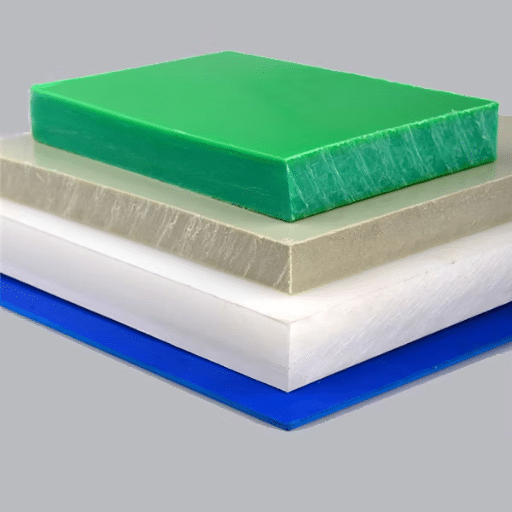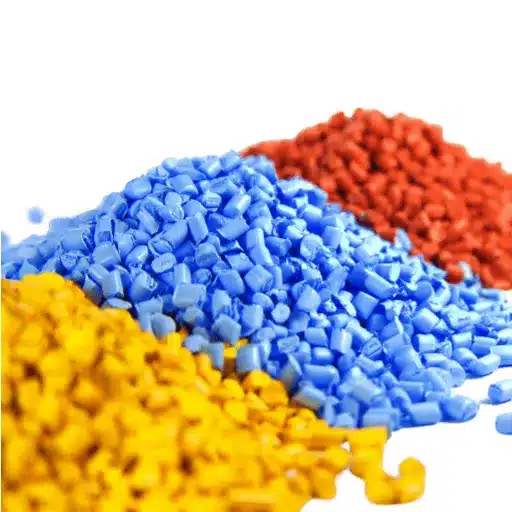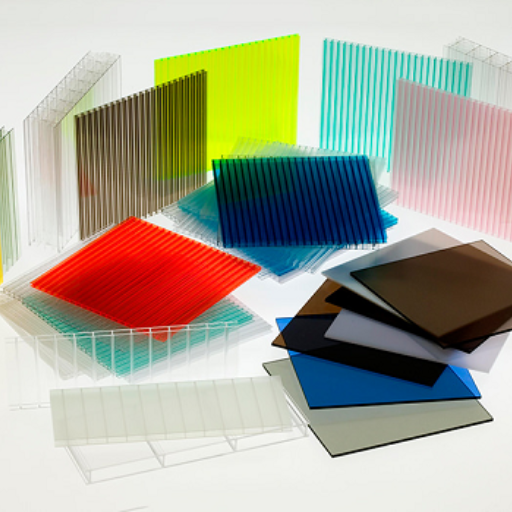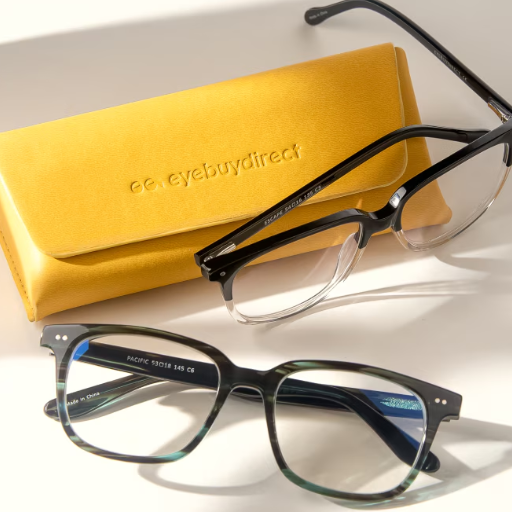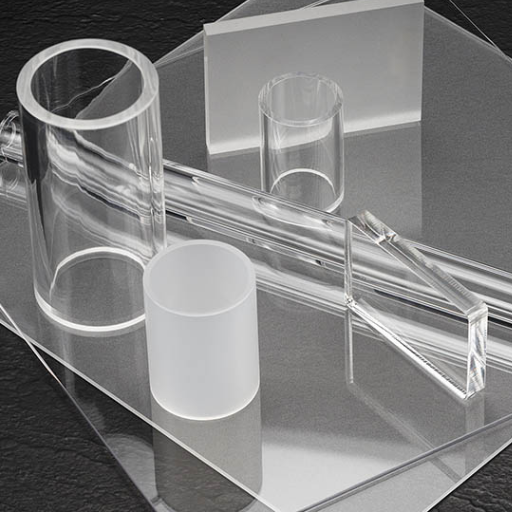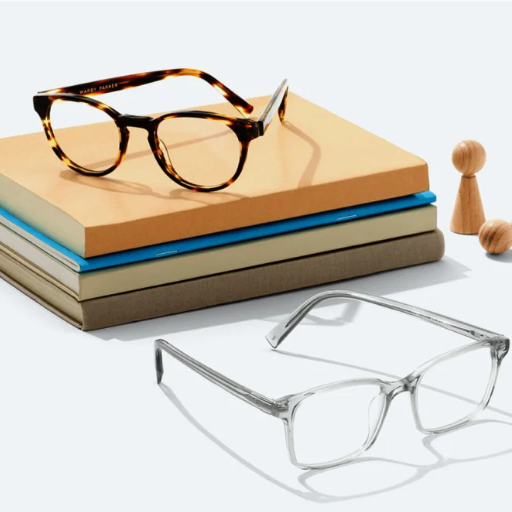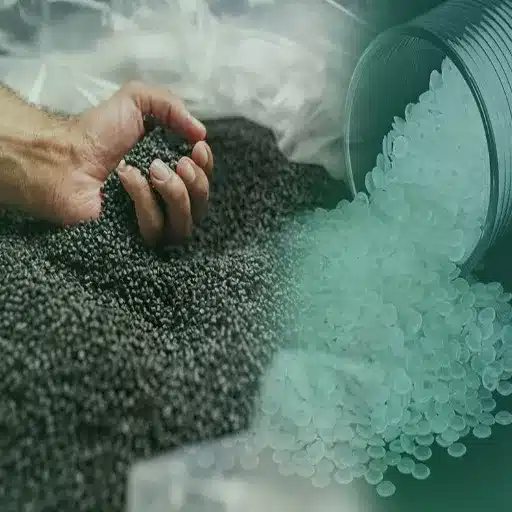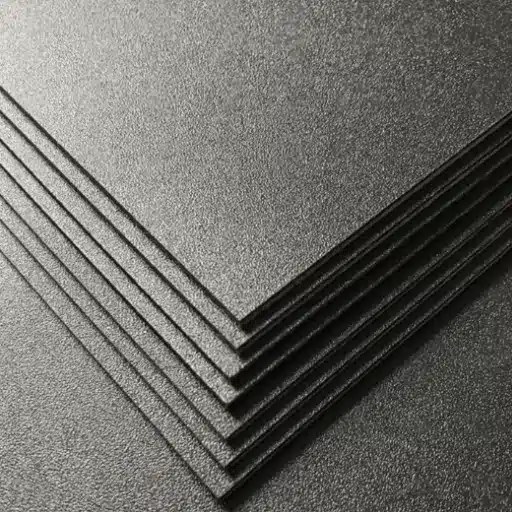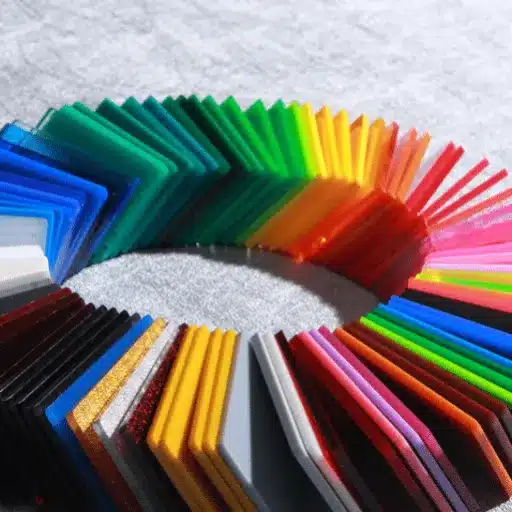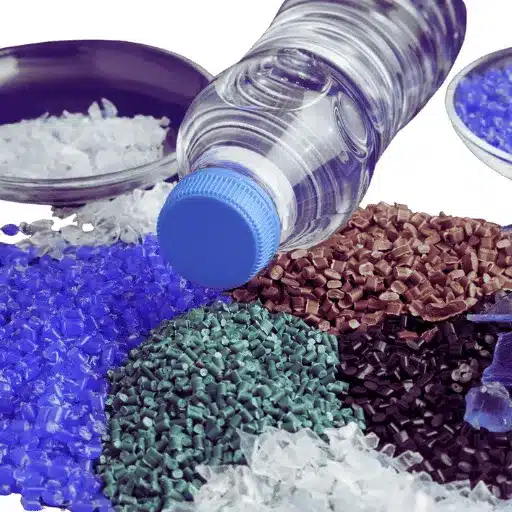Introduction to Polymethyl Methacrylate

What is PMMA?
Polymethyl methacrylate (PMMA) is a clear thermoplastic which is very often used as a glass substitute that is light in weight and resistant to shattering. PMMA, which is commonly called acrylic or by trade names such as Plexiglas, Lucite, and Acrylite, is an organic polymer obtained from the polymerization of methyl methacrylate (MMA). The material has got great qualities such as optical clarity, UV resistance, and durability, which make it suitable for a range of applications from windows and skylights to medical devices and automobile parts. The good points of its versatility and good conditions for molding and fabrication make PMMA still a very important material in industries that need high-performance and aesthetically pleasing solutions.
Key Characteristics of PMMA:
- Exceptional optical clarity with high light transmittance
- Superior UV resistance for outdoor applications
- Lightweight yet durable material properties
- Excellent moldability and fabrication capabilities
- Shatter-resistant compared to traditional glass
Historical Context of Methyl Methacrylate
Methyl methacrylate (MMA) was first discovered and synthesized in the first decade of the 20th century. Back then, chemists were exploring various materials that could be polymerized for industrial use. The late 1920s marked the first synthesis of this compound, but it was not until the 1930s that its full-scale production began with the creation of PMMA or polymethyl methacrylate, which was retail-branded as Plexiglas. The need of the materials made of MMA for the War was so high that they were used in the production of the airplane canopies, submarine periscopes, and other parts requiring durable and transparent characteristics.
With the passing time MMA production methods are becoming more environmentally friendly and the shift towards sustainable processes has begun along the way. The modern methods include environmentally conscious recycling technologies and better catalysts and these are the ways through which the demand for MMA is met while the ecological concerns are addressed. The latest data indicates that the global MMA market is expanding with the automotive, construction, and healthcare sectors being the main drivers while the companies’ focus on innovation and sustainability practices is already shaping the future of the market.
Importance of Polymers in Modern Industry
Polymers are the main characters in modern industry, and they will continue to be so due to their versatility, durability, and cost-effective nature. Global data indicates that the polymer market is on the rise and it is expected to become a $750 billion market by 2028 mainly due to the demand from major sectors like packaging, automotive, construction, and healthcare, among others. Additionally, advanced polymers are still the ones at the center of developing sustainable solutions such as biodegradable plastics, energy-efficient insulation, and lightweight automotive parts. Besides, the developments in polymer science have made it possible to produce self-healing materials, which is one of the major reasons why the technologies used in the production of wearable electronics and renewable energy systems are undergoing a revolution. Thus, the role played by polymers is becoming more and more critical as it not only contributes to innovations but also to the promotion of environmental sustainability and economic growth in modern industries.
📊 Key Market Statistics:
- Market Projection: Expected to reach $750 billion by 2028
- Key Sectors: Packaging, automotive, construction, healthcare
- Innovation Focus: Biodegradable plastics, self-healing materials, energy-efficient solutions
Key Properties of PMMA
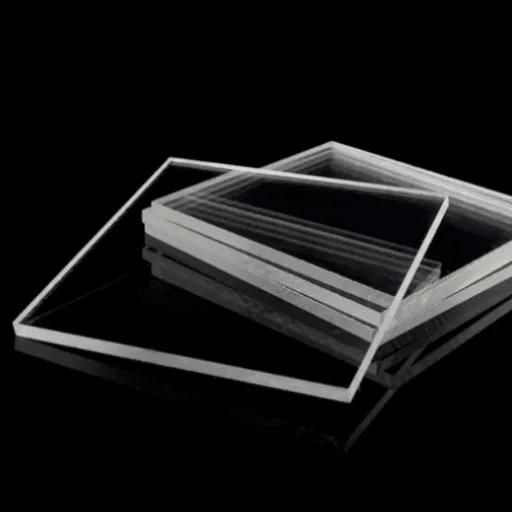
Physical Characteristics
Polymethyl Methacrylate (PMMA), which is often referred to as acrylic or Plexiglas, is characterized by its outstanding transparency and is often used instead of glass in a variety of applications. PMMA has a very high light transmittance rate, allowing almost 92% of visible light to go through it, thus being more transparent than glass. It is not only lightweight, with a density that is about 50% of glass, but it also offers great resistance to impact, thus becoming the more durable and safer option in places where breakage is a common factor. Moreover, PMMA’s resistance to UV rays assures that it will retain its original color and thus, it can be made outdoor furniture and things exposed to sun all the time. Due to its easy fabrication and resistance to chemicals, PMMA is a versatile material that is widely used in many sectors including but not limited to automotive, construction, and medical technology.
| Property | PMMA Value | Comparison to Glass |
|---|---|---|
| Light Transmittance | ~92% | Higher than standard glass |
| Weight (Density) | ~50% of glass | Significantly lighter |
| Impact Resistance | High | Superior shatter resistance |
| UV Resistance | Excellent | Better color retention |
| Fabrication | Easy to shape | More versatile |
Chemical Resistance
PMMA or polymethyl methacrylate is a highly chemical resistant material, thus it is used for a lot of applications and places where the chemical is involved. Dilute acids, alkalis, and oils are no problem for PMMA provided they are not of strong concentration, even then its not totally lost and might just be loosing a bit in the area of structural integrity. But when it comes to solvents, PMMA is totally against it because even simple ones like alcohols, acetone, and some hydrocarbons could be the reason for surface crazing or slow deformation over time. The latest trend shows that there has been an impressive growth in the area of PMMA formulations which has not only strengthened its but also its versatility to certain chemical exposures, thereby increasing its use in the industry. Thus durability is what keeps PMMA being the choice in places with chemical resistance needs such as laboratories, medical devices, and protective barriers.
⚠️ Important Chemical Considerations:
✓ Resistant To:
- Dilute acids
- Dilute alkalis
- Oils and lubricants
✗ Vulnerable To:
- Alcohols
- Acetone
- Some hydrocarbons
Optical Clarity and Transparency
PMMA is the material famous for its wonderful optical clarity, which is able to achieve a light transmittance value as high as 92% and this is already more than that of ordinary glass. Such a fantastic property allows PMMA to be used in a wide range of applications that require high levels of transparency, e.g., lighting, lenses, and display screens. Moreover, technological advancements in PMMA have positively impacted its anti-glare and UV-resistant characteristics which will guarantee a period of prolonged clarity even under direct sun exposure. The continuous development of PMMA in terms of both durability and transparency has made it a must-have material in the aerospace to consumer electronics industry. Not surprisingly, recent reports point out that inquiries regarding PMMA’s optical efficiency have shown a significant increase reflecting its applicability in both commercial and domestic uses. This pattern is indicative of the fact that the need for high-quality transparent materials as part of the innovative designs and solutions of the day is still very relevant.
Common Applications of PMMA

PMMA in Construction and Architecture
PMMA, practically synonymous with its remarkable clarity and toughness against weathering, has almost completely taken over as a primary material in contemporary buildings and architectural designs. The newest figures from search engine reports show a growing fascination in the ways PMMA can be applied to improve not only the aesthetic but also the functional performance in the areas where humans live and work. One of the most frequent usages of PMMA in buildings is for making skylights which let daylight in, using almost no power for lighting, without sacrificing insulation or durability. On the other hand, PMMA’s lightness and quick preparation make it perfect for not only decorative panels but also signs and even soundproof barriers. The data imply an intensified interest in utilizing PMMA’s flexibility for eco-friendly and creative solutions, thus marking its presence in the high-end modern energy-efficient construction projects.
🏗️ Construction Applications:
- Skylights and Windows: Energy-efficient natural lighting solutions with excellent insulation properties
- Decorative Panels: Lightweight, versatile design elements for modern architecture
- Signage: Weather-resistant and clear visibility for commercial and directional signs
- Soundproof Barriers: Acoustic control in urban and commercial environments
Biomedical Applications of PMMA
Polymethyl methacrylate (PMMA) has also become the preferred material in many biomedical applications due to its good compatibility with the human body, transparency, and strength. One of its main functions is in the production of the so-called bone cements, where PMMA plays the role of a scaffold in orthopedic and dental surgeries. This application is particularly important in cases such as joint replacements, where PMMA is used as a secure anchoring material that can be tied to the bony structures. Moreover, PMMA is commonly recognized for its role in the creation of intraocular lenses for cataract surgery, thanks to its ultra-thinness and light-transmitting quality which makes the process quite effective in reversing sight loss.
There has been a noticeable increase in research activity centered on the development of PMMA-based scaffolds capable of promoting tissue engineering aimed at rejuvenating cell growth and repairing damaged tissues. The amenability of PMMA to various modifications also applies to its use in prosthetics and implants, as it can be adapted to simulate the characteristics of both bone and tissue. New inventions are investigating PMMA’s capability in the delivery of drugs where its slow breakdown characteristic creates new avenues for the provision of treatment right to the targeted site. PMMA’s medical application range is extending, and it still happens that it asserts itself as a key material in the progress of modern healthcare solutions.
| Medical Application | Description | Key Benefits |
|---|---|---|
| Bone Cement | Scaffold material for orthopedic and dental surgeries | Secure anchoring, biocompatibility |
| Intraocular Lenses | Lens replacement for cataract surgery | Optical clarity, lightweight |
| Tissue Engineering | Scaffolds for cell growth and tissue repair | Promotes regeneration, customizable |
| Prosthetics & Implants | Customizable implants mimicking bone/tissue | Adaptable, durable |
| Drug Delivery Systems | Controlled release mechanisms | Targeted treatment, slow breakdown |
Use of PMMA in Cosmetics and Personal Care Products
Polymethyl methacrylate (PMMA) has gained a wide application area in the field of cosmetics and personal care products owing to its physical properties and versatility that are nothing short of remarkable. Foundations, powders, and creams are some of the cosmetic products where PMMA microbeads are the main component used as fillers or texturizers. These microbeads not only provide the product with a smooth, matte finish but also facilitate oil absorption for a long-lasting effect that is highly desirable in makeup formulations, thus enhancing the product’s application.
The search engine trends recently released show a rising popularity of PMMA among developers who work on skin-friendly formulations that are also very light. PMMA’s application area is not limited to aesthetics only but it has won the status of a safer and non-reactive alternative to the materials previously used in exfoliating products such as microplastics in connection with those practices that are harmful to the environment. The material’s ability to adapt and its biocompatibility are what guarantee its continuous crucial role in the advancing realm of cosmetic innovation.
💄 Cosmetic Applications Overview:
- Fillers and Texturizers: Provides smooth, matte finish in foundations and powders
- Oil Absorption: Long-lasting makeup performance
- Exfoliating Products: Eco-friendly alternative to harmful microplastics
- Skin-Friendly Formulations: Biocompatible and non-reactive properties
Advancements in PMMA Manufacturing Techniques
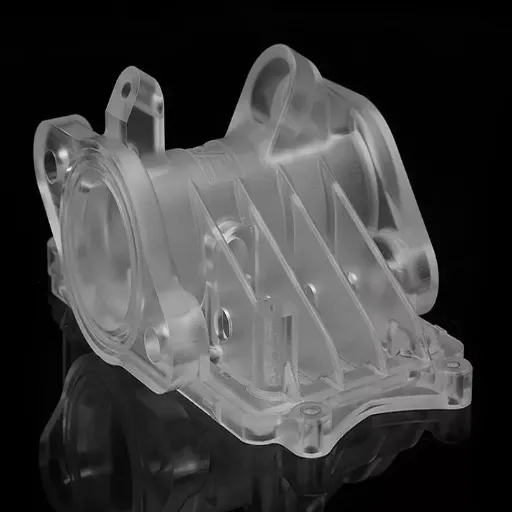
Innovations in Polymer Formulation
The last years brought about significant breakthroughs in the production of Polymethyl Methacrylate (PMMA) by polymer formulation innovations. To the point of the very low performance of the traditional PMMA type, the categories of flexible, super durable, very UV resistant formulations were developed in consideration of the specific applications of the new PMMA technology. One notable change was the introduction of plant-based PMMA formulations, which are obtained from non-depleting sources. These practices not only help lessen the environmental impact but also the industry’s move towards the use of renewable sources whence the natural gas and other fossil fuels are derived from.
Moreover, the use of nanotechnology in the mixture process has made it possible to create PMMA with great light capture properties and improved fineness in surface treatments. These qualities not only make the strong and lasting PMMA very attractive for usage in international automotive, consumer electronics and various other applications but also by exploiting techniques through responsive design goals it is certain that the versatility and sustainability of PMMA of applications in diverse industries will continue.
3D Printing with PMMA
3D printing in PMMA (Polymethyl Methacrylate) brings major benefits, especially for precision and clarity demanding industries. PMMA is typically used when prototypes, models, and intricate designs need to be made for its crystal-clear, strong and light qualities. The investments in the manufacturing of advanced technologies and materials have allowed the printing of PMMA at a higher quality and with a more appealing finish. This 3D printing material has thus become a favorite in the fields of medical devices, optical lenses, and automotive parts.
The latest findings reveal growing interest in PMMA for additive manufacturing due to its consistency and versatility. Industries that repeatedly need the look of glass have found PMMA to be their choice because of its shatterproof character and ease of modification. Furthermore, ongoing research and development are working towards making PMMA easier to use with different 3D printing techniques like SLA (Stereolithography) and SLS (Selective Laser Sintering) to tap into more market share for customized applications.
🖨️ 3D Printing Advantages:
- High Precision: Ideal for intricate designs and detailed prototypes
- Optical Quality: Crystal-clear transparency for optical applications
- Material Efficiency: Reduced waste compared to traditional manufacturing
- Customization: Easy modification for specialized applications
- Technology Compatibility: Works with SLA and SLS printing methods
Environmental Considerations in PMMA Production
The multifunctional characteristics of Polymethyl Methacrylate (PMMA) production, while benefiting many sectors, come with a host of environmental issues. The major concern is that the entire chain of PMMA production requires the use of petrochemical-based raw materials, with the resulting impact on CO2 emissions due to not only the raw material but also the whole manufacturing process. Another environmental drawback is that products made of PMMA cannot be thrown away as they would not decompose and hence become part of the plastic pollution problem as landfills will be overflowing with such products.
One of the ways to tackle these issues is through greener production processes, one of which happens to be the development of bio-based PMMA from renewable feedstocks. Recycling programs are also helping with the waste problem as new technologies are being introduced that can successfully de-polymerize PMMA back to the monomer state so that the company can use the raw material again thus reducing waste. In addition, the combination of advances in closed-loop manufacturing systems and strict emission and waste regulations is making PMMA production more sustainable.
| Environmental Challenge | Sustainable Solution |
|---|---|
| Petrochemical-based raw materials | Bio-based PMMA from renewable feedstocks |
| High CO2 emissions | Improved catalysts and energy-efficient processes |
| Non-biodegradable waste | Advanced recycling and de-polymerization technologies |
| Landfill accumulation | Closed-loop manufacturing systems |
Notable Innovations Using PMMA

Smart Materials and PMMA
The field of smart materials has PMMA, or polymethyl methacrylate, as one of its biggest supporters because of this polymer’s qualities like strength, transparency, and lightness. These days, the PMMA being leaned on to the side of materials that can mend themselves, to the side of adaptive optics and to the side of responsive sensors. To give an example, PMMA is involved in creating such windows that vary their opacity according to temperature or light intensity, thereby contributing to the energy efficiency of buildings. Besides, the medical field has also shown interest in PMMA as a possible component for drug delivery systems which would release medication according to feedback from the patient’s body. The maturity of PMMA stands out as one of the main drivers of the newly emerging material evolution through radical innovation.
🔬 Smart Material Applications:
- Self-Healing Materials: Autonomous repair capabilities for extended product life
- Adaptive Optics: Dynamic opacity control for energy-efficient windows
- Responsive Sensors: Real-time environmental monitoring and adjustment
- Smart Drug Delivery: Body-responsive medication release systems
Recent Developments in Acrylic Technology
The acrylic technology has undergone a considerable change, along with the innovations that impact durable goods and service industries. One of the most significant advancements in the area of the environment-friendly domain has been the combination of acrylic materials with solar panels having excellent light-diffusing capabilities so that the energy harvesting becomes more efficient. Besides, the advancements in 3D printing techniques have made it possible to produce complex acrylic layers with very high accuracy and virtually no waste in terms of material, thereby leading to a more environmentally-friendly production process. These developments backed not only by the continuous research but also by the technology trends in the industry, acrylic’s versatility and its power to push the innovations further in this area are clearly demonstrated.
Future Trends in PMMA Applications
The field of Polymethyl Methacrylate is going to be widely used in the future by the applications of it through the technologies. Even with the nanotechnology being advanced, PMMA materials will have a sizeable role in the creation of the smart materials like the self-mending surfaces and the adjustable light-filtering systems. In addition, there is a growing concern regarding the sustainability of manufacturing processes, and hence, researchers are looking at bio-based PMMA as a potential alternative to reduce the impact of traditional petroleum-derived plastics on the environment.
Another trend that is quite promising is the use of PMMA in electric vehicles (EVs) and renewable energy systems. Since PMMA is lightweight and tough, it can be used for battery components in EVs as well as solar panel covers where high efficiency and long life are the main concerns. Moreover, PMMA’s growing use in the medical field, for instance in 3D-printed implants and advanced prosthetics, is another proof of its versatility. With the support of the inflow of new data trends, PMMA remains on the growth path, and it also caters to the market demands for materials that are sustainable, high-performing, and multifunctional.
🚀 Emerging Trends:
- Nanotechnology Integration: Self-healing surfaces and advanced light-filtering systems
- Bio-Based Alternatives: Sustainable PMMA from renewable sources
- Electric Vehicles: Lightweight battery components for improved efficiency
- Renewable Energy: Durable solar panel covers for enhanced performance
- Advanced Medical Devices: 3D-printed implants and next-generation prosthetics
Frequently Asked Questions (FAQ)
What is PMMA’s composition and how does it influence application areas?
Polymethyl methacrylate (PMMA) is a synthetic polymer characterized by great mechanical properties, such as high toughness and impact strength, which, in turn, made its usage in many industries possible. PMMA has a relatively low glass transition temperature that endows it with great flexibility and durability in various environmental conditions. In addition, being a synthetic polymer, PMMA is shatterproof, hence safer than glass in the case of contact lenses and acrylic glass applications. Besides, PMMA features low absorption of water, which to a certain extent, contributes to its stability and longevity in the medical field, for instance, in dentures and prosthetics. The characteristic of PMMA to be used in different forms makes it suitable for tailoring to the engineered plastics and cosmetic formulations requirements.
What are the different methods for PMMA polymerization according to the intended application?
The polymerization of PMMA goes through the process of using the benzoyl peroxide type of initiators, which helps in starting the reaction of the methyl methacrylate liquid with the other components. This method can be altered to create different forms of PMMA, such as beads or powders or sheets, based on the planned application. To meet the challenges in the biomedical field and to increase the properties of PMMA, the modified PMMA formulations may be subjected to water absorption reduction. The polymerization stage provides the ability to exert control over the polymer chains such that one can manufacture certain properties such as the transparency and rigidity of the materials. Cases in engineering plastic applications of PMMA illustrate the material’s versatility in formulation making it the primary choice for products across a wide spectrum of industries.
What are the areas where PMMA finds its primary uses in the field of cosmetic surgery?
Among other uses, PMMA is one such filler material that has been extensively used in cosmetic surgeries owing to its compatibility with human body, resistance to degradation and longevity. Among the various properties of PMMA, the most important is its resistance to degradation and maintenance of structural integrity which makes it a top-filler for implant and enhancement in the face area. PMMA has also been identified as one of the safe and reliable options in the field of cosmetic surgery due to its various advantages, including easy injection and rapid absorption in the body. Also, PMMA spheres work great for adding volume and sculpting in cosmetic procedures. The one-to-one correspondence with the desired consistency and impact force for injection is possible through the formulation fine-tuning. In addition, the Cosmetic Ingredient Review has stressed on the effectiveness of PMMA in several aesthetic uses thus proving its position as a safe and reliable option in the field of cosmetic surgery.
What are the effects of the formulation of PMMA on its mechanical properties?
The particular choice of PMMA formulation has a great impact on its mechanical characteristics such as impact strength and toughness. The addition of specific additives or the change of resin may lead to the enhancement of PMMA’s performance and, thus, in meeting the very specific world requirements. For instance, while adding plasticizers, the glass transition temperature may be lowered, therefore, improving the flexibility without sacrificing the strength. Furthermore, the formulation can be designed in such a way that it would have both characteristics, i.e., transparency and toughness, which will be especially useful in the acrylic glass case. The PMMA matrix formed with the different components gives rise to products that are capable of passing through any performance criteria in any of the industries.
Why does everyone recommend using PMMA instead of glass?
Due to its superior shatter resistance as well as light weight, PMMA is often on the list of substitutes for glass. Compared to ordinary glass, which is very easily broken by impact, PMMA will hardly be broken making it the safest alternative in applications where breakage is of concern. Also, PMMA gives very good clarity, that is almost the same as glass’s, thus restricting visibility not to be a problem. Its easy fabrication as well as its capability to be shaped into complicated forms makes it further easier to be adopted in the design of products. Moreover, PMMA has high resistance towards UV, which is a factor that affects its optical properties degradation over time, which makes it an even more suitable choice for outdoor applications.
Reference Sources
- MIT – PMMA Material Properties
This resource provides detailed insights into PMMA’s adhesion properties, biocompatibility, and its use in applications like photoresists and silicon dioxide adhesion. Source - Princeton University – PMMA Overview
This guide discusses PMMA’s optical clarity, refractive index, and its applications in optical components and photoresist materials. Source - PubMed Central – Prosthodontic Applications of PMMA
This article highlights PMMA’s use in dental applications, such as denture bases, artificial teeth, and other prosthetic uses, emphasizing its biocompatibility. Source
Conclusion
Polymethyl Methacrylate (PMMA) has proven itself to be an indispensable material across diverse industries, from construction and architecture to biomedical applications and cutting-edge smart technologies. Its exceptional combination of optical clarity, durability, lightweight properties, and versatility continues to drive innovation in both traditional and emerging fields. As manufacturing techniques advance and environmental considerations shape the future of material science, PMMA’s evolution toward more sustainable, bio-based alternatives and enhanced functionalities positions it at the forefront of modern material solutions. Whether in the development of energy-efficient buildings, life-saving medical devices, or next-generation electric vehicles, PMMA remains a cornerstone material that bridges the gap between performance, aesthetics, and sustainability in our rapidly evolving technological landscape.






